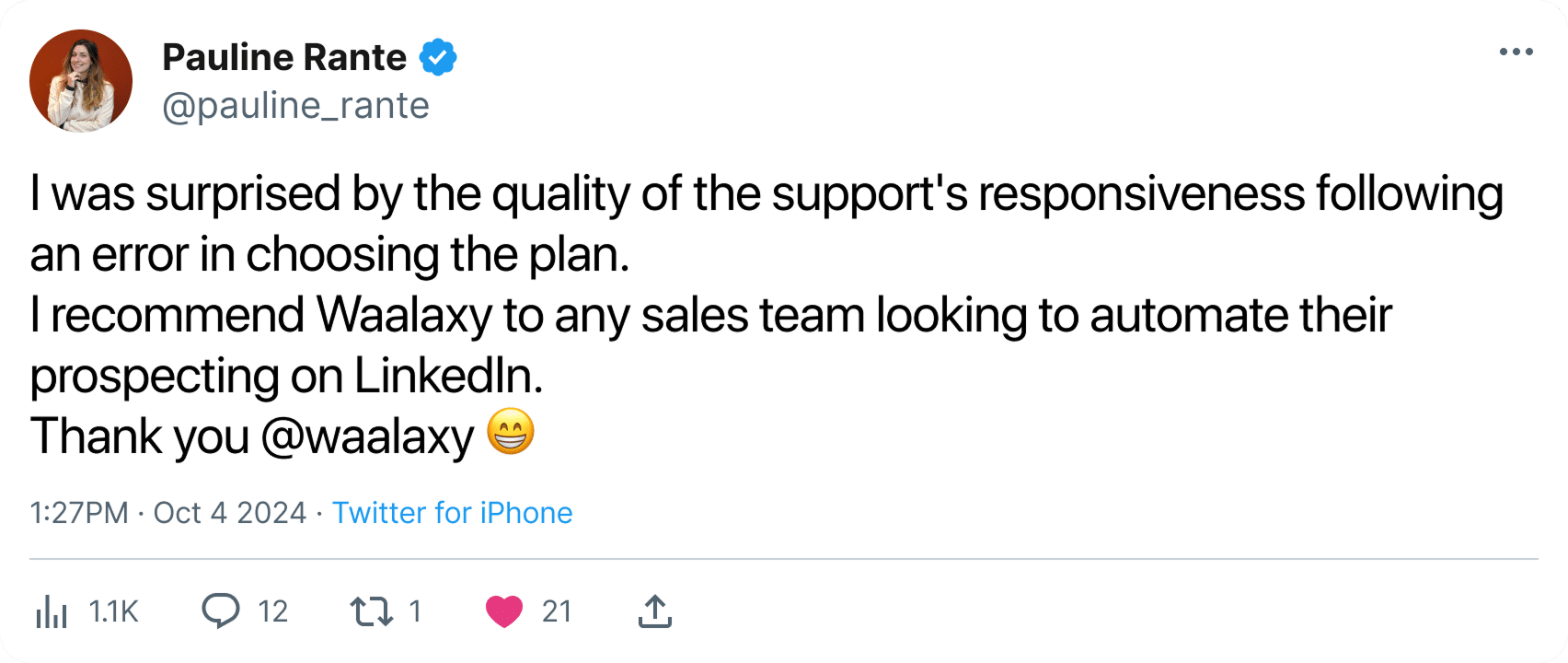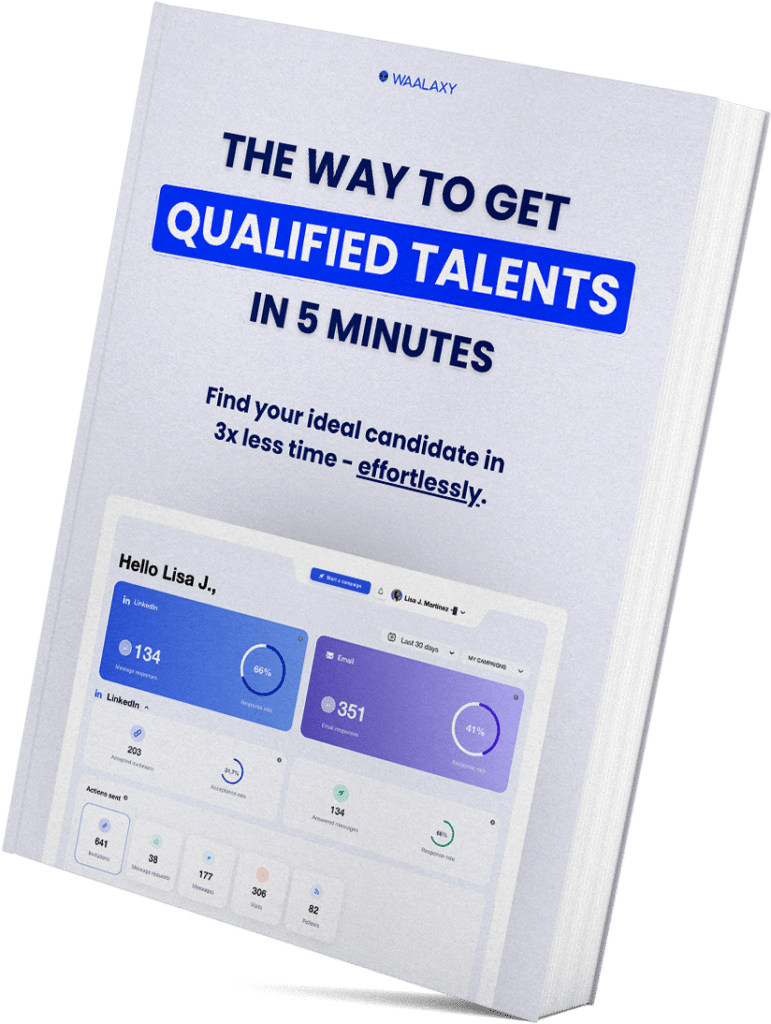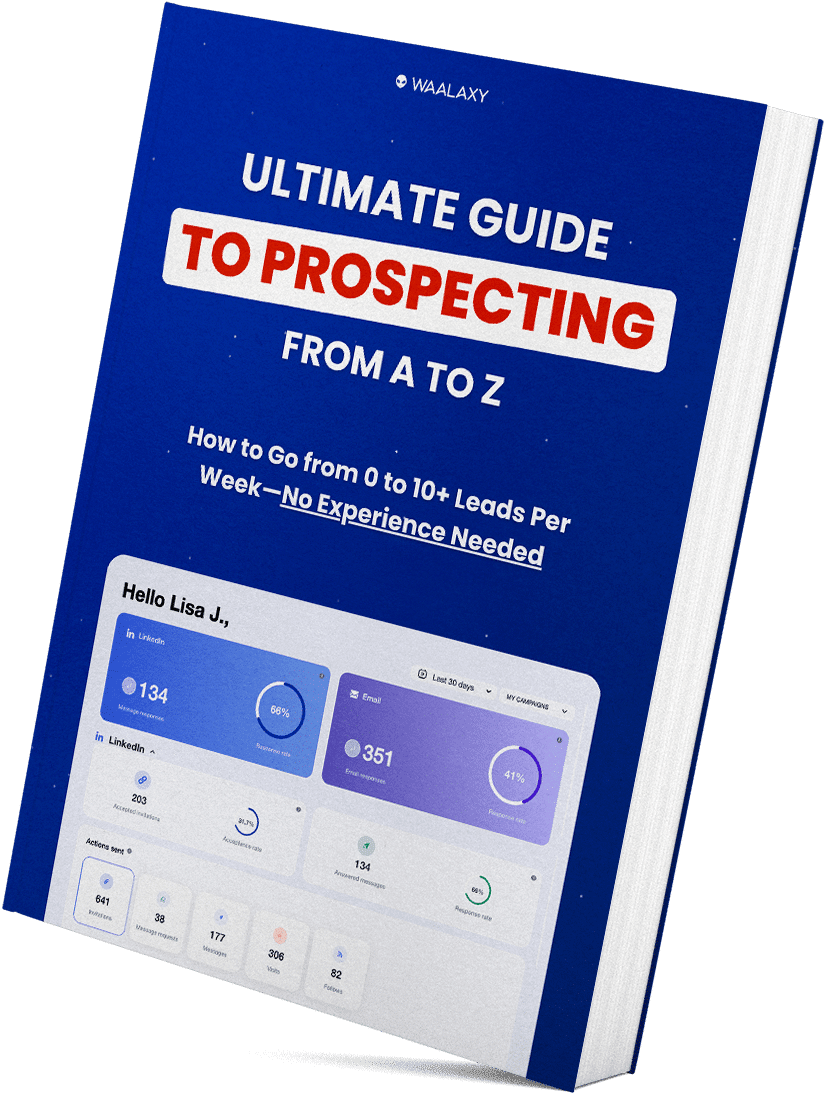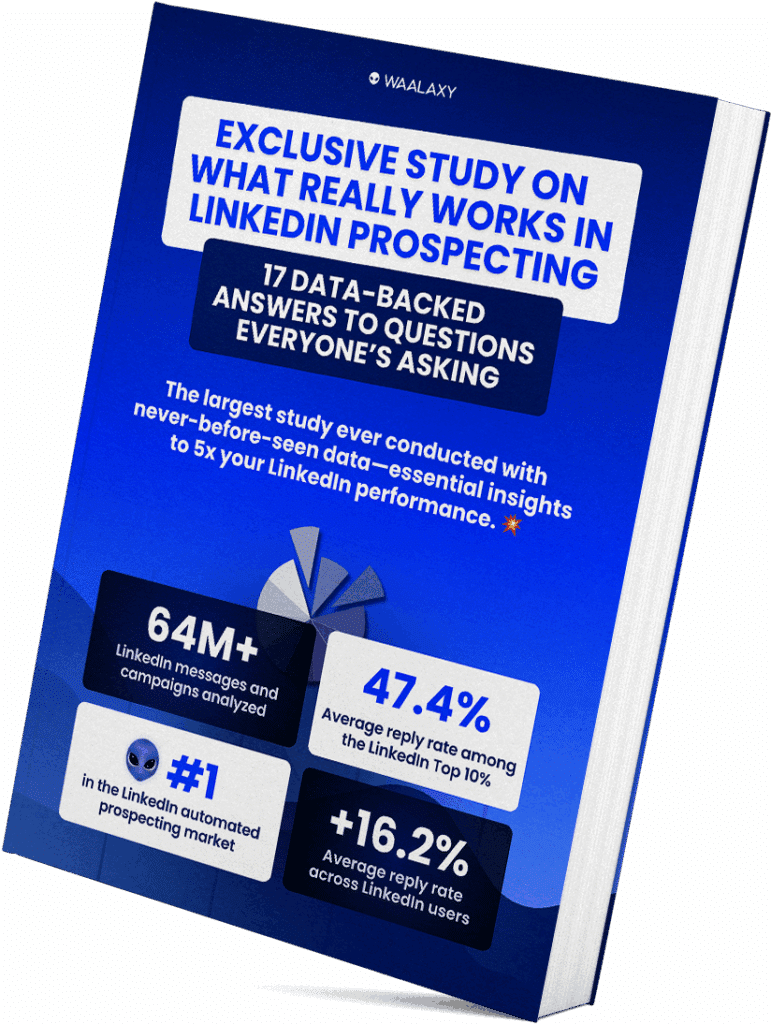Double opt-in is like the VIP bodyguard of your list. ⭐️
In a world where inboxes are overflowing and the GPDR is keeping an eye on things, this little extra step can make all the difference between a campaign that hits the mark and one that fades into oblivion. 🕳️
Today, we’re going to see together why double opt-in is a real lever for boosting the quality of your contacts, your deliverability, and above all, your brand image. 🚀
Ready to filter your subscribers like a pro and send your emails to a truly engaged audience? Let’s get started! (Reading time: 5 minutes).
Definition of double opt-in
Use double opt-in is a two-step registration process, designed to ensure that a person really wants to receive your emails and that they actually own the email address. 📧
In concrete terms, it’s a 3-step process. 👇🏼
1️⃣ Registration via form.
The user fills in their personal details on your site, landing page or pop-up.
Example: signing up for a newsletter, downloading a PDF guide, entering a competition.
2️⃣ Sending a confirmation email.
Your emailing tool automatically sends a short, clear message with a validation link. This email must not contain any promotional content.
3️⃣ User validation click.
By clicking on this link, the user confirms that he/she is the one who registered and that he/she agrees to receive your communications.
This click is recorded in your logs, allowing you to prove consent if needed (GPDR, CNIL).
Okay, but why is this important? 🤔
Well:
- ⚙️ Reliability: you eliminate erroneous, temporary or invented addresses.
- 📋 Compliance: you easily prove consent in the event of an audit.
- 🤝🏽 Engagement: your future emails are sent to an audience that has already interacted with you twice.
Advantages and disadvantages of double opt-in
What better way to illustrate than with a little chart? 😇
| Advantages ✅ | Disadvantages ❌ |
|---|---|
| List quality: only valid, active addresses are kept, fewer bounces and junk emails. | Less volume: some subscribers will never click on the confirmation email, even if they were interested. |
| Better deliverability: fewer spam complaints, better sender reputation, your emails arrive more often in the inbox. | Extra friction: a two-step process can discourage the less motivated. |
| GPDR compliance: clear proof of consent in the event of an audit. | Risk of oversight: the confirmation email may be lost in spam or ignored. |
| Higher engagement: subscriberswho have confirmed are more receptive and active. | More technical implementation: requires configuration in your emailing tool. |
| Protection against fraudulent registrations: robots, competitors or trapped addresses. | Additional time to communicate: you have to wait for confirmation before sending your content. |
Differences between single opt-in vs. double opt-in
When it comes to newsletter and email marketing sign-ups, there are two camps: single opt-in and double opt-in.
We’ll quickly explain the differences. 👇🏼
1) Registration validated immediately vs. double confirmation
🔹 Single opt in.
Imagine someone comes across your form, types in their email, clicks “sign up” and bim, they’re already on your list. 📋
No extra validation, no clicking in an email, you save time and subscribers, but not always qualitative ones…
The result? You risk collecting addresses stuffed with mistakes, junk emails, even registrations made by someone else (yes yes, it happens) 😅.
🔹 Double opt in.
Here, we play it safe. 🃏
After registering on the form, the person receives a confirmation email with a link to click. 🐭
As long as they haven’t clicked, they won’t be added to your list. As a result, only people who are really interested take the time to confirm.
On your side, you’re sure that the address exists, and that she wants to read you. 😇
2) Impact on the quality and quantity of subscribers
Double opt-in email acts as a natural spam filter.
People who confirm are more engaged, open your emails more, click more often, and complain a lot less (your deliverability says thank you) 🙏🏽.
Also useful for the GPDR, you can prove that the user actually said “yes” twice.
With single opt-in, you’ll certainly have more subscribers, but you’ll have inactive or low-quality contacts that will plummet your statistics. 📉
With double opt-in, it’s the other way around: you’ll have fewer subscribers, but every contact counts.
And the truth is, it’s better to have 1,000 real readers who open your emails than 5,000 ghosts who never click. 👻
Passive opt-in vs. active opt-in
We often hear “passive” and “active” when we talk about opt-in, but what is it? 🤔
Passive: implicit registration
Passive is a bit like “I didn’t really ask you, but you’re here anyway”.
Some examples: ⬇️
- A checkbox already ticked during an online purchase.
- Automatic addition to a newsletter after downloading an e-book.
- The use of your given e-mail address for an order.
The problem is that the user doesn’t always realize he’s signing up for something. 👀
As a result, he receives emails he didn’t really ask for, opens less and clicks less…
In Europe, this type of opt-in is strongly discouraged, even prohibited, as consent must be clear and voluntary.
Active: voluntary action by the user
Here, we’re more on the “I really want to receive your emails, and I assume it” version. 👀
For example: ⬇️
- A voluntary checkbox on a form.
- Explicit subscription to a newsletter.
- Entering a competition by clearly ticking “yes, I would like to receive your emails”.
As a result, your subscribers are more engaged, your open rates rise and, above all, you have proof in case of control. 🚓
Legal framework and GPDR
The General Protection Data Regulation (GPDR) and the CNIL set a clear rule, consent to receive marketing emails must be free, specific and informed. 💡
Let’s take a closer look at this. 🔎
Is double opt-in mandatory?
Well, no, it’s not imposed by the GPDR.
However, it is considered the best practice for easily proving that you have indeed obtained your subscriber’s consent :
- With a single opt-in ⭢ you must keep proof (date, time, IP address, source of form).
- With a double opt in ⭢ you can show that the person filled in a LinkedIn Lead Gen form and clicked on a confirmation link.
In short, it’s not a legal obligation, but it’s your best ally in the event of a control or dispute.
France: CNIL recommendations
In France, here are a few rules to know:
- 🥇 In B2C (general public) ⭢ opti in mandatory, you must obtain a clear agreement before any commercial sending.
- 🥈 In B2B (prospection between professionals) ⭢ you can send emails without opt in if the user can unsubscribe and the message is related to the recipient‘s professional activity.
The CNIL strongly recommends using forms with a voluntary checkbox (active opt-in) and keeping proof of consent.
How to personalize the registration process?
Okay, now that you know what it is and why it’s important to use it, we’re going to explain how to personalize the registration process. 📧
1) Make the form attractive and clear
Think of your form as the front door to your home. If it’s poorly lit, badly signposted or full of cobwebs, few people will want to walk through it.
To achieve this, you need to :
- 1️⃣ Limit fields: the more information you ask for, the more subscribers you lose.
- 2️⃣ Pay attention to the tagline: forget about “subscribe to our newsletter”, it doesn’t encourage people to take action.
Example of a tagline: “receive a LinkedIn tip every Tuesday that generates qualified leads”.
- 3️⃣ Design and strategic placement: use your brand colors, a highly visible button and an eye-catching format.
- 4️⃣ Total transparency: indicate what the person will receive (content), how often it will be sent, how to unsubscribe easily.
The clearer you are, the more confident people will feel about giving you their e-mail. 🤝🏽
2) Optimize the confirmation email
Here’s where a lot of people fail: the confirmation e-mail is often forgotten, even though it’s the one that decides whether or not the registration goes ahead.
Let me explain: 👇🏼
- Clear, engaging subject line ⭢ your subscriber should understand the action in a second.
- Direct, reassuring message ⭢ Explain why he’s receiving this email.
- A single call to action ⭢ avoid multiple links that disperse attention.
- Visual consistency ⭢ the email should resemble your brand (colors, logo, tone) to avoid confusion.
- Beware of legality ⭢ in some countries like Germany, it is forbidden to include promotional content in the confirmation email.
3) Work on landing pages
Finally, the double opt-in path has two key pages that are unfortunately often underestimated.
First, we have the “Thank you” page after the form.
As soon as someone submits their email, they should arrive on a clear page that :
- Thanks for registering.
- Explains that a confirmation email has just been sent.
- Gives useful advice.
Take advantage of this opportunity to include a preview of the content as soon as she receives it, or a short teaser that makes her want to confirm quickly.
Then you have the “Registration confirmed” page.
Don’t settle for a simple “thank you, your registration is confirmed”, instead do :
- Offer a welcome gift (ebook, template, checklist).
- Showcase your most popular content.
- Offer a link to your community or social networks.
Use this page to subtly sell your product/service.
💡 Tip: this page is also a perfect place to start selling subtly. Your subscriber is hot, motivated… now’s the time to present them with your flagship offer.
4 best practices for maximizing confirmations
As you can see, there’s more to a double opt-in than simply sending a confirmation e-mail and keeping your fingers crossed. 🤞🏽
That’s why we’re giving you our 4 best practices for maximizing confirmations. 😇
1) Follow up with registrants who haven’t confirmed
Often, the email went to spam, they closed the tab too quickly, or were interrupted.
Result ⭢ their registration remains pending.
To avoid this, set up an automatic reminder sequence. It’s easy to set up and can save you precious time. ✨
For example, the first reminder can go out 24 hours after registration, if confirmation has not been made. ⏰
Keep the tone friendly, and remind them why they signed up (we’re not savages here).
2) Adapt the tone and design to your brand
The confirmation email is the first interaction between you and your future subscriber. 🤝🏽
If your email is cold, well, it doesn’t make people want to click (put yourself in the customer’s shoes).
Your goal is to make sure that, as soon as they open it, users say to themselves: “that’s them, I want to continue”! 😇
To get your e-mail off to a good start, here are a few tips:
- Use your usual colors, logo and fonts.
- Choose a tone in line with your style.
- Add a signature with your first name and team photo.
3) Test the timing of the confirmation email
By default, most emailing tools send the confirmation email immediately after registration.
It’s logical, users are still in the thick of it, so to speak.
However, this isn’t necessarily the best timing. 😬
If your forms are often filled out in between, well, the email arrives at a time when the person doesn’t have time. to click. 🐭
To do this, you need to test different timings :
- Immediate delivery: concentrated audience available at the moment of registration.
- Delayed sending of a few minutes: allows users to finish what they’re doing and focus on the action later.
- Delayed sending of a few hours: audience more. reactive at a specific time of day.
4) Monitor the right indicators
Setting up a double opt-in is good, but knowing whether it’s working is better. ✨
And for that, nothing too complicated, we’re going to track a few key indicators that will give us clues as to what you need to improve.
Let’s start with the first KPI, and not the least: the confirmation rate.
If you don’t know what this is, it’s the number of users who have completed the form and clicked on the link in the validation e-mail.
Generally speaking, if your confirmation rate is too low, here are the main causes: ⬇️
- Confirmation email not very visible.
- Subject not clear enough.
- Poorly placed button.
- Messages blocked as spam.
The second indicator is the open rate of the confirmation e-mail. Basically, if your contacts don’t open it, they won’t click.
If this is the case, don’t panic, you can improve:
- 🔵 Subject line.
- 🔵 Pre-header.
- 🔵 Sender’s name.
Remember to also look at the average time between registration and click.
Why? 🤔
Well, a very long delay can indicate a lack of “urgency” or poor sending timing. 👀
Finally, take a look at the lost contact rate (those who never confirm). If this is high, we recommend you analyze and adjust your follow-up actions. 🛩️
Test, simplify, adjust, that’s the key to a good double opt-in.
How about a recap?
You could do with a simple form, one click and you’ve got a subscriber. ☝🏼
But you know, how it’s going to end, people remembering, not even having left their e-mail, spam complaints, and above all, your deliverability hability plunging. 🤿
Double opt in isn’t just another button, it’s a filter, a step, a bit like that kind of message: “are you sure you want to come in?”. 🤔
You’ll have understood, what ticks, those who are more engaged, because they want to read you. 📖
Yes, you’ll have fewer people, but, you’ll have more quality, more impact and therefore, more results! 🔥
So, u what are you waiting for to set up the double opt in? 👀
What are the rules of double opt-in?
Double opt in is not a legal obligation per se, but meets several rules, which allow you to remain compliant with the GPDR and CNIL recommendations. ⬇️
| Rule | Details |
|---|---|
| Clear, voluntary consent. | Users must understand what they are signing up for. The form specifies the type of emails (content, frequency) and contains a voluntary checkbox (active opt-in). |
| Double confirmation. | After registration, a confirmation email is sent with a unique link to click. No marketing emails should be sent before this validation. |
| Neutrality of the confirmation email. | In some countries (e.g. Germany, Austria), no promotional content may appear in the confirmation email. It should simply recall the registration and request validation. |
| Proof of consent. | Keep the date, time, IP address and copy of the form or email clicked in order to prove consent in the event of an GPDR check or complaint. |
| Easy unsubscription. | After confirmation, every email sent must contain a clear, visible and free unsubscribe link. |
What is an opt-in page?
An opt-in page is a page specifically designed to collect a visitor’s data (often their email address) in exchange for something (promo code, e-book, white paper, etc). 📘
The aim here is to convince a visitor to voluntarily give you this information in order to join your list or gain access to exclusive content.
Typical examples: 👇🏼
- 🔵 A catchy headline that highlights the benefit.
- 🔵 Short description explaining what the subscriber will receive and how often.
- 🔵 A registration form.
- 🔵 A clear call to action.
What’s the difference between single opt-in and double opt-in?
The difference between single opt-in and double opt-in comes down to the number of steps required to validate the registration.
With single opt-in, a person enters his or her e-mail address in a form and is immediately added to the mailing list without any further verification.
It’s quick and easy, but sometimes it can add erroneous emails or uncommitted contacts. 😞
Conversely, double opt-in adds an extra step. 👀
After filling in the form, the user receives a confirmation e-mail containing a link to click on to validate their registration. 🤝🏽
Thanks to this, we can be sure that the address is valid and that the user really wants to receive your e-mails, which, as you’ll have understood, improves the quality of your database and, above all, GPDR compliance. 🫡
Double opt-in holds no more secrets for you, see you soon! 👋









